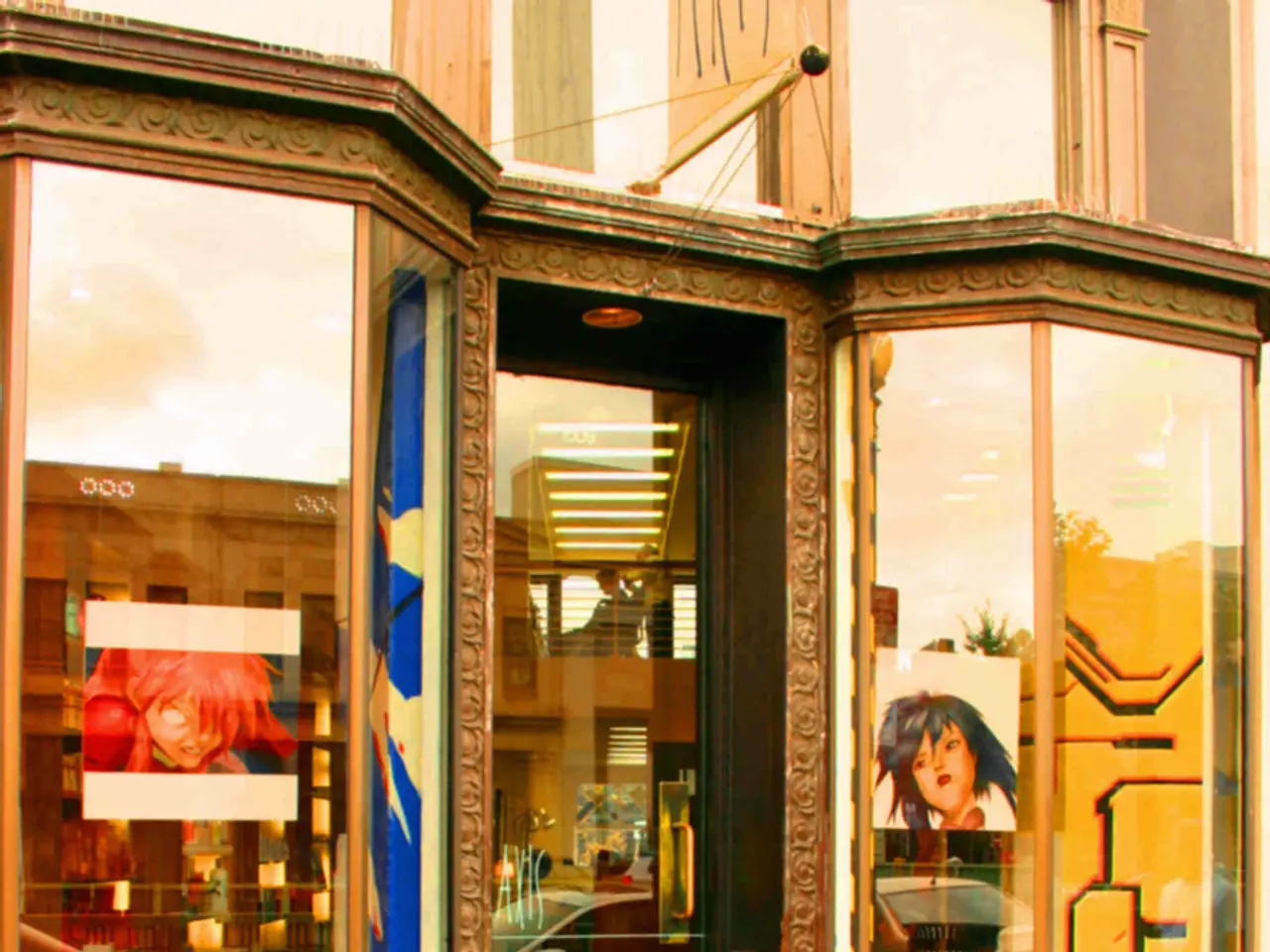Focus on IKEA instead of Apple, designers: IKEA takes center stage
=========================================================================================================
In the heart of Edinburgh, the Dovecot Studios is currently hosting the "Magical Patterns" exhibition, showcasing IKEA's iconic textile designs that have shaped the brand's history over six decades. This vibrant display features 180 vintage and contemporary fabrics, including the RANDIG BANAN stripes and the ANNIKEN broccoli pattern, as well as works by renowned designers like Zandra Rhodes and Marimekko [2][3][4].
The exhibition is more than just a showroom of IKEA's textile heritage; it is a testament to the brand's democratic design philosophy. IKEA's approach to creating colorful, affordable, and carefully considered household items has made it a significant player in design history, particularly in textile patterning and print culture [2][4]. By supporting independent designers and elevating experimental textile art to a global stage, IKEA has acted as a "nursery for experimental artists and designers" since the 1960s [2][4].
Visitors can interact with the exhibition by creating their own pattern combinations in a pop-up design studio at the Dovecot [3]. This hands-on experience highlights the brand's commitment to accessibility and inclusivity, allowing people to engage with IKEA's designs on a personal level.
In contrast to Apple, which is often celebrated for its sleek, minimalist, and high-tech consumer electronics, IKEA's influence on democratic design lies in its focus on accessibility, affordability, and cultural inclusivity through everyday household textiles and products. While Apple's "less is more" aesthetic is undeniably impressive, IKEA's willingness to experiment and make design accessible to a wider audience sets it apart [2][3][4].
The "Magical Patterns" exhibition vividly illustrates how IKEA democratizes design by making vibrant, artistic textile patterns widely available and integrated into daily life. This contrasts with Apple's focus on cutting-edge digital aesthetics and luxury consumer electronics. By showcasing its textile heritage and commitment to accessibility, IKEA's influence is celebrated through the lens of textile heritage and design for all, whereas Apple's impact is more centralized around user experience and technological innovation.
IKEA's designs, such as the RANDIG BANAN stripes, which were initially too wild for customers in the 1980s but have since been revived as a classic, demonstrate the brand's ability to make design accessible and meaningful for a wider audience [2][3]. Walking through an IKEA showroom, one can witness mastery in space-saving, color-matching, and practicality, as well as a focus on addressing practical problems, such as fitting a life into a small apartment or storing vinyl records [2][3].
In summary, the "Magical Patterns" exhibition at Edinburgh's Dovecot Studios is a celebration of IKEA's democratic design philosophy, contrasting Apple's more technology-centered design influence. This exhibition serves as a reminder that good design should aim to improve lives, not just cater to the elite [2][3][4]. The exhibition runs until January at Edinburgh's Dovecot Studios.
- In the realm of fashion-and-beauty and home-and-garden, the designer Zandra Rhodes and Marimekko are renowned for their contributions to IKEA's branding, with their works displaying prominently in the "Magical Patterns" exhibition.
- IKEA's democratic design philosophy includes the creation of colorful, affordable, and carefully considered household items, evident in their 3D designs, UI, and layout.
- In addition to the exhibition, visitors at Dovecot Studios can engage hands-on with the design process in a pop-up studio, showcasing IKEA's dedication to inclusivity and accessibility.
- Interior-design enthusiasts can appreciate IKEA's legacy and commitment to all aspects of design, from textiles to lifestyle, as demonstrated in their artful approaches to space-saving, color-matching, and practicality.
- By democratizing design through accessible and meaningful patterns, IKEA transcends the barriers found in Apple's minimalist, high-tech, and luxury-focused consumer electronics.
- The "Magical Patterns" exhibition emphasizes IKEA's ability to make meaningful design accessible and integrated into daily life, showcasing both vintage and contemporary fabrics, like the RANDIG BANAN stripes and the ANNIKEN broccoli pattern.
- Furthermore, the exhibition illustrates that good design should not only cater to the elite, but strive to improve everyday lives, a value that resonates powerfully with IKEA's approach to design.





